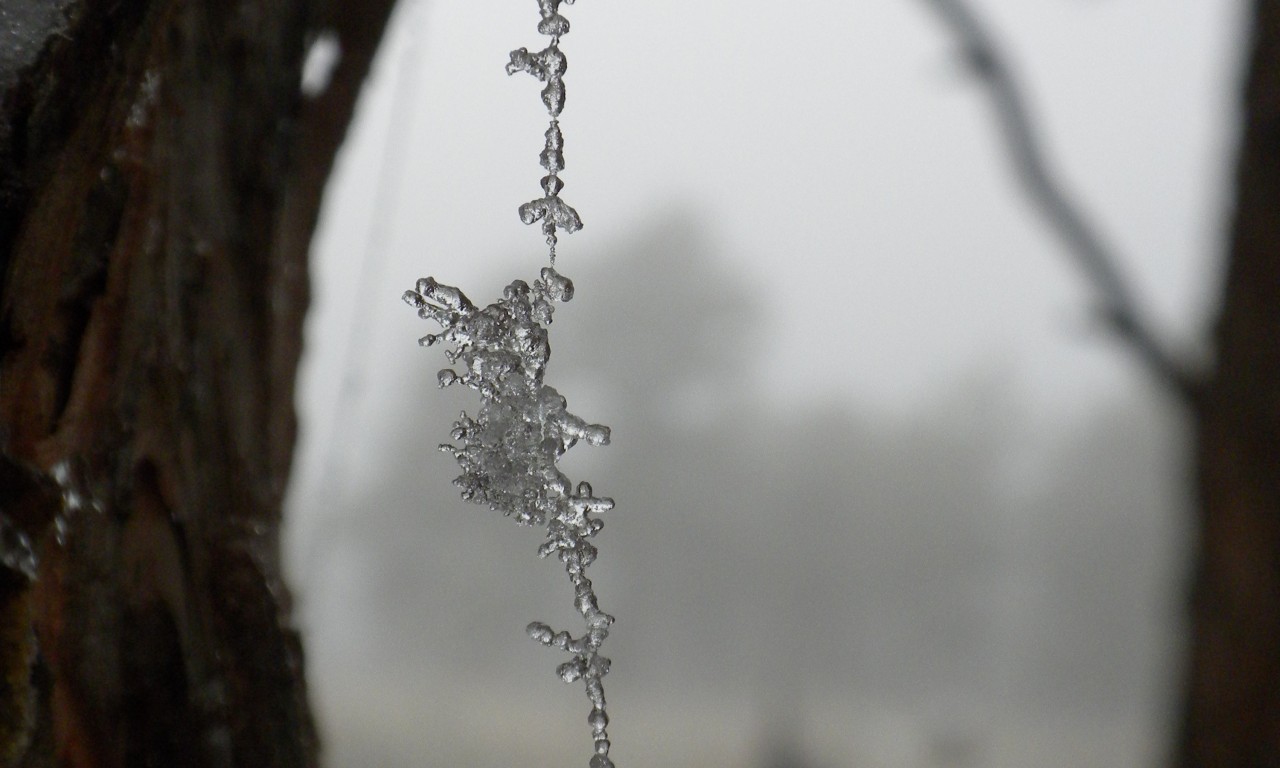Snow is peaceful. Fresh, delicate and pure, it coats the landscape and renews the world with white drifts. After a snowstorm, the naked branches of aspen trees at Caribou Ranch cast twisted shadows on flawless fields. At Mud Lake, the tracks of wandering moose puncture the white trails. It is winter, it is quiet, and frozen crystals have transformed the land.
Solid-Liquid-Vapor
Snow and ice crystals form in a variety of ways, resulting in a huge diversity of individual crystal types and shapes. A fascinating aspect of how snow and ice appear on our landscape depends on the three physical states of water: solid, liquid or gas (vapor). Water typically transitions between these three stages in order from solid, to liquid, to gas, or vice versa. However, sometimes, conditions allow for water to bypass a stage and jump directly from being a gas to a solid, or the other way around. These unusual transitions are key to the formation of snow.
Regular snowflakes form when moisture-laden clouds drop to temperatures of freezing or below. In these conditions, water vapor within the cloud can bypass the liquid stage and immediately form as a solid ice crystal by condensing onto a central dust particle. As more water vapor condenses around the core crystal, larger crystals develop.
Shape Shifting
Each snowflake is unique, but they all share the characteristic that the crystals are six-sided. These crystals also only come in one of six different shapes: needles, columns, plates, plate-capped columns, dendrites and stars. Which shape a snow crystal takes depends on the amount of humidity present and the temperature at the time the crystals form. As individual crystals form, they can cling together, forming a larger flake of ice. When the accumulated crystals become heavy and large enough, they fall out of the cloud and float to earth as snowflakes.
Snow doesn’t always appear in these iconic stellar shapes, however. Sometimes liquid water held within clouds becomes supercooled: it drops below freezing temperatures without crystallizing or becoming solid. Supercooled water droplets in clouds adhere to falling snowflakes and freeze into tiny balls. Termed graupel, these little pellets of mixed snow and ice fall to the ground and create a fine coating of ball-bearing like snow.
Hovering Above
Ice does not always fall to the ground from above. Sometimes sparkling ice begins to coat our world directly out of thin air. If the outside air is below freezing, as well as sufficiently damp, it is possible for water vapor to turn directly into solid ice crystals on surfaces which are also below freezing. This process creates a coating of “hoarfrost” on surfaces such as tree branches, leaf edges, blades of grass or telephone wires. Though Colorado often experiences cold enough temperatures, the air is usually too dry to allow hoarfrost to form. When this coating of ice does occur, though it can be a truly magical sight.
Just as ice can surprisingly appear in our world out of vapor, so too can it disappear. In the high elevation, and dry and windy environments of Colorado, snow is often lost to the atmosphere via the process of sublimation: the conversion of solid ice into water vapor without passing through the liquid state. Essentially the reverse process of hoarfrost formation, sublimation causes the loss of large amounts of snow into the thin air every winter in Colorado.
Ice covers our wintry world in many forms, from star-shaped ice crystals, to balls of graupel, to delicate coatings of hoarfrost on leaves. What makes all these forms of snow and ice possible is the invisible and unique dance of water molecules through different physical states, whether up in the clouds, or down next to trees and shrubs. Moving between solid, liquid and gaseous states (and sometimes missing a state in between), water transitions its way into and out of our world before our eyes, peacefully sparkling along the way.


